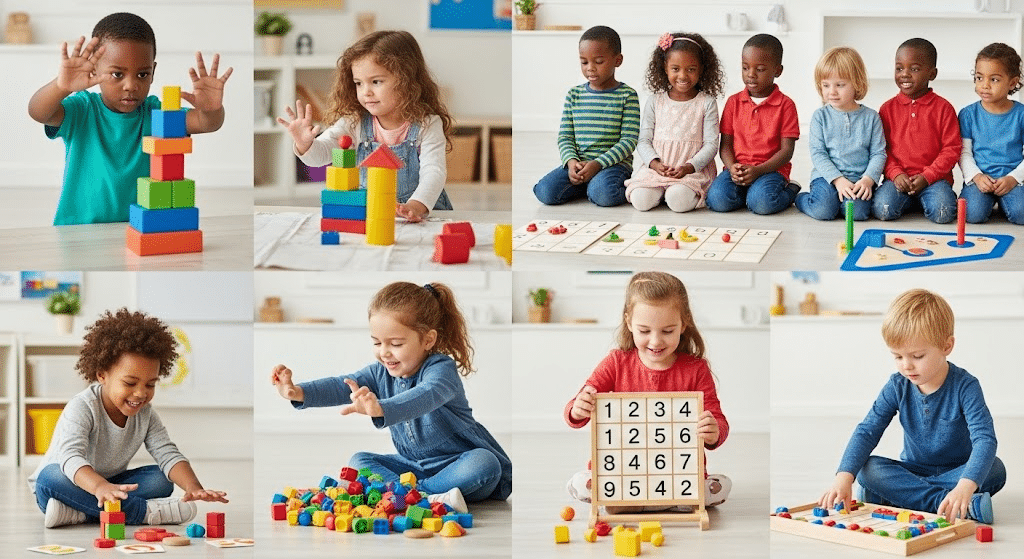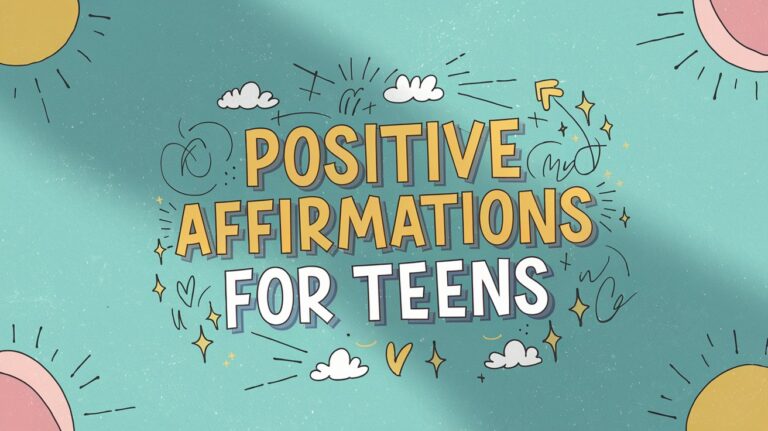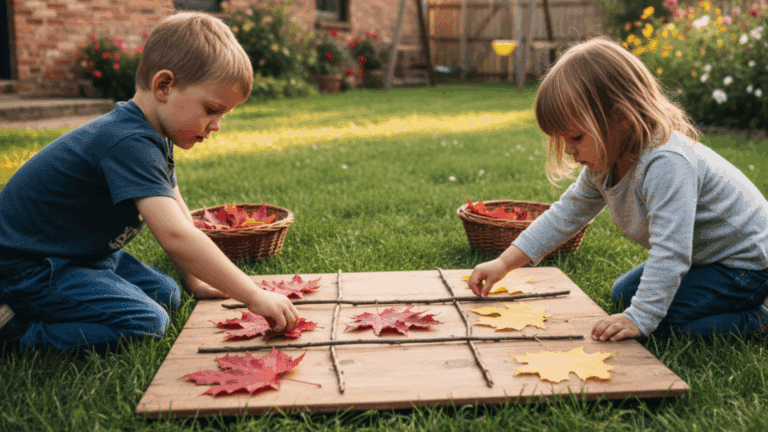Kids and impulse control are natural enemies. One minute they’re sitting calmly, the next they’re launching themselves off the couch because they spotted a butterfly outside. It’s like their brains are wired for immediate action, and waiting is torture.
Impulse control games for kids are absolute game-changers for keeping kids engaged while secretly teaching them patience.
These aren’t your typical boring “sit still and count to ten” activities. They’re fun, challenging, and sneaky enough that kids don’t realize they’re learning valuable self-control skills.
Ready to turn impulse control into playtime?
Why is Impulse Control Important in Children?
Impulse control is the foundation for everything else kids need to learn. When children can pause before acting, they make better decisions, have fewer conflicts with friends, and can focus better on learning.
Impulse control games for kids tend to perform better in school because they can resist the urge to shout out answers, wait their turn, and persevere with challenging tasks instead of giving up immediately.
These skills directly translate to improved grades and fewer behavioral issues in the classroom.
Strong impulse control also helps with emotional regulation. Children who can pause before reacting are less likely to have explosive meltdowns or aggressive outbursts.
They learn to think before they act, which leads to healthier relationships and fewer social problems.
Intriguing Impulse Control Games for Kids
These games are designed to be genuinely fun while secretly building the self-control skills kids need.
Each activity can be adapted for different ages and attention spans, making them perfect for busy parents and caregivers.
1. Red Light, Green Light

This classic game gets kids moving while practicing stop-and-go control. Players move when they hear “green light” and freeze immediately when they hear “red light.” It’s simple but surprisingly effective for building impulse control.
- Why it works: Combines physical movement with the need to stop abruptly, teaching body control and listening skills..
- How to play: Players line up and move toward the finish line only during “green light,” freezing completely during “red light.”
- Tip: Add a yellow light for slow-motion movement to increase difficulty and make it more engaging.
2. Simon Says

The ultimate listening and impulse control game that never gets old. Players must follow commands only when preceded by “Simon Says,” requiring careful attention and impulse control to avoid following unauthorized commands.
- Why it works: Teaches kids to listen carefully and think before acting instead of automatically following instructions
- How to play: Give commands with and without “Simon Says”; players only follow commands that start with “Simon Says”
- Tip: Use silly actions like “Simon says touch your nose with your elbow” to keep kids engaged and laughing
3. Musical Statues

Kids dance freely to music but must freeze like statues when the music stops. This game builds auditory attention and physical impulse control while allowing for creative expression through movement.
- Why it works: Combines fun movement with the challenge of stopping abruptly, building both physical and mental control
- How to play: Play music for dancing, then stop it randomly – players must freeze in whatever position they’re in
- Tip: Have kids hold creative poses like animals or superheroes to make the freezing part more engaging
4. The Floor is Lava

Players must navigate a room without touching the floor using furniture, pillows, or designated safe spots. This game requires planning and controlling the urge to rush, building both impulse control and problem-solving skills.
- Why it works: Forces kids to think before moving and plan their route instead of rushing impulsively
- How to play: Designate furniture and pillows as safe spots, then challenge kids to move around without touching the floor
- Tip: Create specific missions like “get from the couch to the kitchen” to add structure and goals
5. Traffic Light Breathing
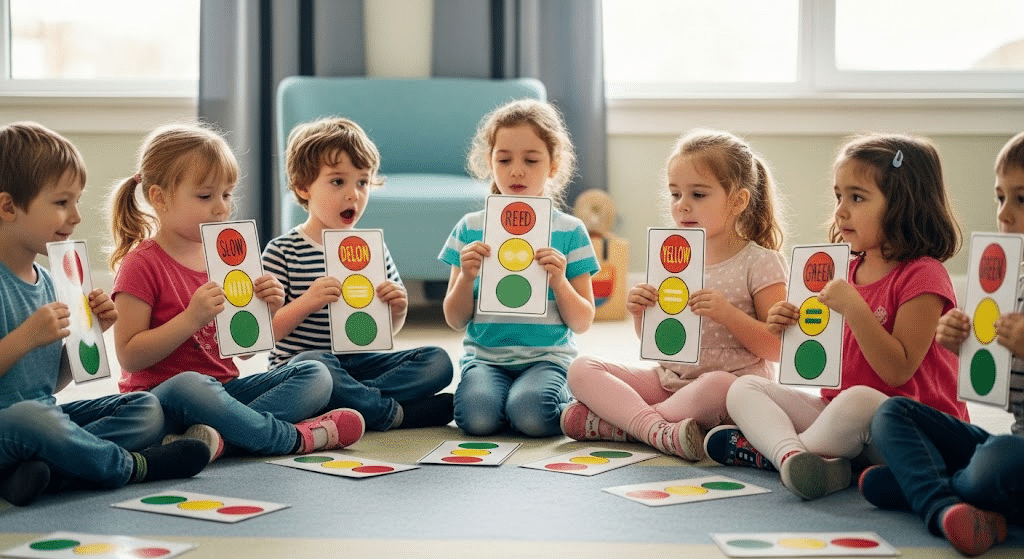
A calming game where kids breathe in sync with traffic light signals. Red means stop and hold breath, yellow means slow deep breaths, and green means normal breathing. This teaches self-regulation and body awareness.
- Why it works: Connects breath control with impulse control, teaching kids to use breathing as a calming strategy
- How to play: Show colored cards or call out colors, and kids adjust their breathing to match the traffic light signal
- Tip: Use this game during stressful moments or transitions to help kids reset their emotional state
6. Follow the Leader

One person leads while others must copy their movements exactly. This game requires attention, patience, and the ability to wait and watch before acting. It also builds social skills and cooperation.
- Why it works: Teaches kids to observe and wait for cues instead of acting independently
- How to play: The Leader performs actions that others must copy exactly, rotating leadership among players
- Tip: Start with simple movements and gradually increase complexity as kids improve their attention skills
7. Freeze Dance

Similar to musical statues, but with a greater emphasis on creative dancing. Kids dance however they want, but must freeze completely when the music stops. This builds auditory processing and physical control.
- Why it works: Allows creative expression while requiring immediate response control when the music stops
- How to play: Play upbeat music for dancing, stop it randomly, and players must freeze mid-movement
- Tip: Call out dance styles like “robot dance” or “animal dance” to add variety and keep kids engaged
8. Mother May I
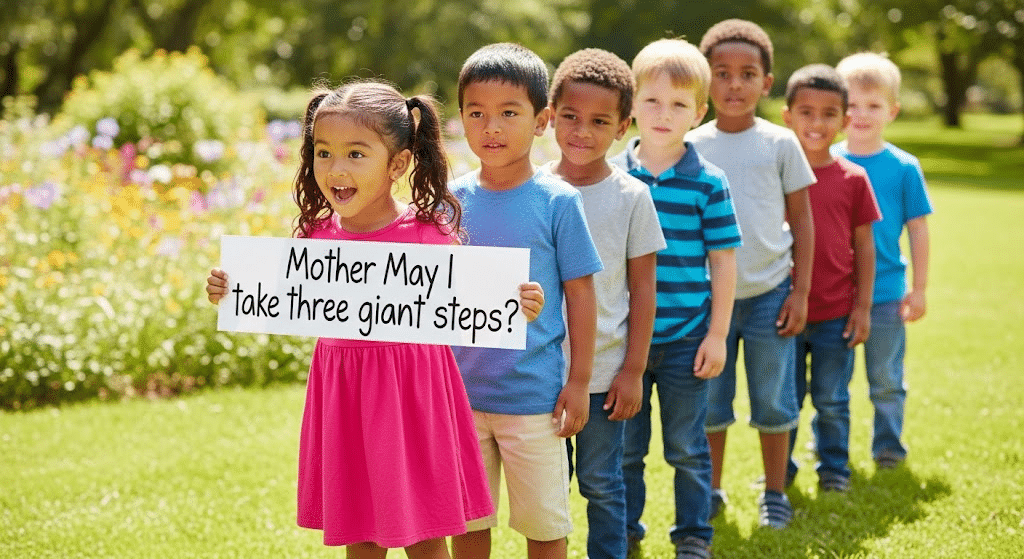
A formal request game where players must ask “Mother, may I?” before taking any steps. This teaches patience, polite communication, and the ability to wait for permission before acting.
- Why it works: It builds respect for authority and teaches kids to ask before acting impulsively.
- How to play: Players ask “Mother may I take [number] steps?” and must wait for a yes/no response before moving.
- Tip: Vary the types of steps (baby steps, giant steps, backward steps) to keep the game interesting.
9. Hot Potato

Players pass an object around a circle while music plays, trying not to hold it when the music stops. This game builds anticipation, tolerance, and quick decision-making under pressure.
- Why it works: It creates excitement while teaching kids to handle anxiety and make quick decisions.
- How to play: Pass an object around a circle while music plays; the person holding it when music stops is out.
- Tip: Use a soft, safe object and keep rounds short to maintain engagement and prevent frustration.
10. Sleeping Lions

Players lie down and pretend to be sleeping lions, staying completely still while others try to make them move without touching. This game builds sustained attention and physical impulse control.
- Why it works: Challenges kids to maintain stillness despite distractions and silly attempts to make them move.
- How to play: Players lie still like sleeping lions while others make funny faces or sounds to try to make them move.
- Tip: Set a reasonable time limit (2-3 minutes) and have a special reward for successful sleeping lions.
11. What Time Is It, Mr. Wolf?

Players approach a wolf who has their back turned, asking, “What time is it, Mr. Wolf?” The wolf gives a time, and players take that many steps forward. When the wolf says “dinner time,” they chase the players.
- Why it works: It builds suspense tolerance and teaches kids to control their speed and movement.
- How to play: One player is the wolf, others approach asking the time, taking steps based on the answer.
- Tip: Use a large play area and establish clear boundaries for safety during the chase portion.
12. Impulse Control Dice Game

Roll the dice to determine actions, but players must wait for permission before acting.
This teaches patience and the ability to delay gratification even when they know what they want to do.
- Why it works: It creates anticipation and teaches kids to wait for the appropriate timing before acting.
- How to play: Roll the dice for actions (jump, clap, spin), but players must wait for the “go” signal before doing the action.
- Tip: Create a chart that explains the meaning of each number to make the game more visual and engaging.
13. Zen Garden Drawing
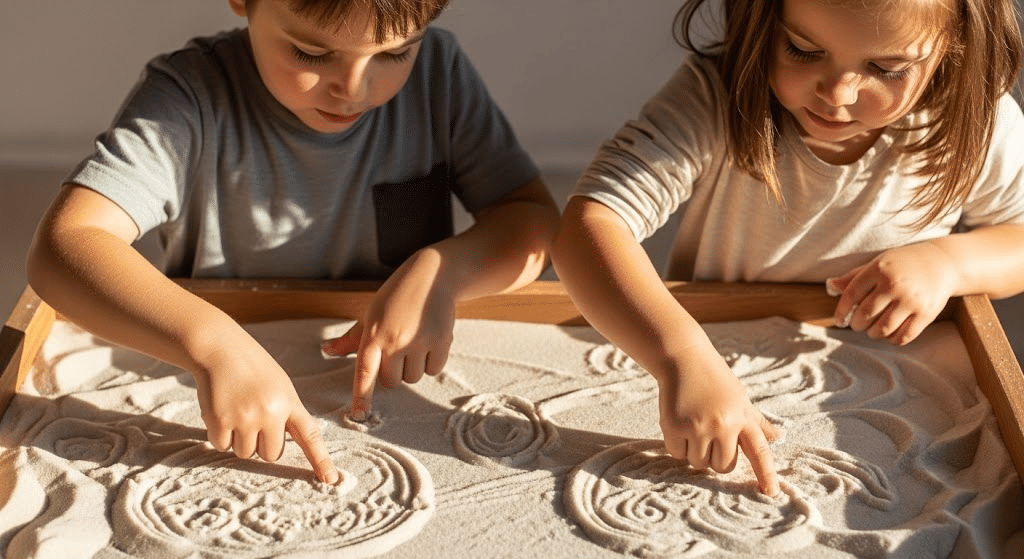
Give kids sand or flour in a shallow container and let them draw with their fingers. They must draw slowly and carefully, erasing and starting over if they rush. This builds patience and fine motor control.
- Why it works: Encourages slow, mindful movement and teaches kids to take their time with activities.
- How to play: Draw patterns or pictures slowly in sand, focusing on careful, controlled movements.
- Tip: Play calming music and encourage deep breathing while drawing to improve the calming effect.
14. Cookie Face Challenge

Players place a cookie on their forehead and must move it to their mouth using only facial movements. This game requires patience, planning, and resisting the urge to use hands.
- Why it works: Forces kids to slow down and think creatively, rather than using the obvious solution.
- How to play: Place a cookie on your forehead, move it to your mouth using only facial expressions and head movements.
- Tip: Use safe, easy-to-eat cookies and have napkins ready for the inevitable mess.
15. Mindful Coloring Races

Kids color pictures, but they must color slowly and stay within the lines. The goal isn’t to finish first but to color most wholly and carefully. This teaches patience and attention to detail.
- Why it works: Reverses the typical rush mentality and rewards careful, thoughtful work over speed.
- How to play: Give coloring pages and emphasize quality over speed, rewarding careful coloring.
- Tip: Use special coloring tools, such as gel pens or markers, to make the slow coloring process feel more rewarding.
Signs That Your Child Might Be Struggling with Impulse Control
These behaviors are entirely normal for young children, but recognizing patterns can help parents determine when to focus more on developing these skills.
Most kids show some of these signs occasionally, but consistent patterns might indicate a need for extra support.
- Interrupting conversations constantly: jumping into adult conversations or cutting off friends mid-sentence.
- Difficulty waiting for turns: pushing ahead in lines, grabbing toys from others, or melting down when they have to wait.
- Blurting out answers: shouting responses before questions are finished or before being called on.
- Physical impulsiveness: hitting, pushing, or touching things they shouldn’t without thinking.
- Trouble following multi-step directions: Getting distracted or moving on before completing tasks.
- Emotional outbursts over minor frustrations: significant reactions to small disappointments or changes in plans.
- Difficulty with transitions: struggling to stop preferred activities or move between tasks.
- Risk-taking behaviors: climbing too high, running into traffic, or doing dangerous things without considering the consequences.
Impulse Control Games for Kids to Buy
These games help kids learn how to think before acting, control their impulses, and make thoughtful decisions in a relaxed, enjoyable setting.
| Game | Description | Skills Developed |
|---|---|---|
| The Game of Life | A classic game where kids make decisions about careers, money, and family, teaching them how to manage resources and plan ahead. | Decision-making, planning, impulse control, resource management |
| Don’t Break the Ice | A game where players carefully tap out blocks of ice without letting the penguin fall through. Encourages thoughtful decision-making and precision. | Impulse control, patience, careful decision-making |
| Guess Who? | Players ask yes-or-no questions to figure out the mystery character, teaching kids how to think strategically and manage their actions. | Impulse control, strategic questioning, decision-making |
| Jenga | Players remove wooden blocks from a tower without toppling it, requiring steady hands and careful thought before making a move. | Impulse control, patience, hand-eye coordination, careful decision-making |
| Uno | A card game where kids match colors and numbers while thinking about the best moves to avoid getting stuck with high cards. | Impulse control, strategic thinking, planning, decision-making |
Final Thoughts
Impulse control games for kids aren’t just fun activities, they’re building blocks for success in every area of life.
The beauty of these games lies in their ability to work on multiple levels simultaneously. Kids think they’re just playing, but they’re developing crucial life skills that will serve them well throughout their lives.
The key is to keep it fun, stay consistent, and celebrate progress along the way. with patience and the right activities, every child can develop the impulse control skills they need to thrive.


